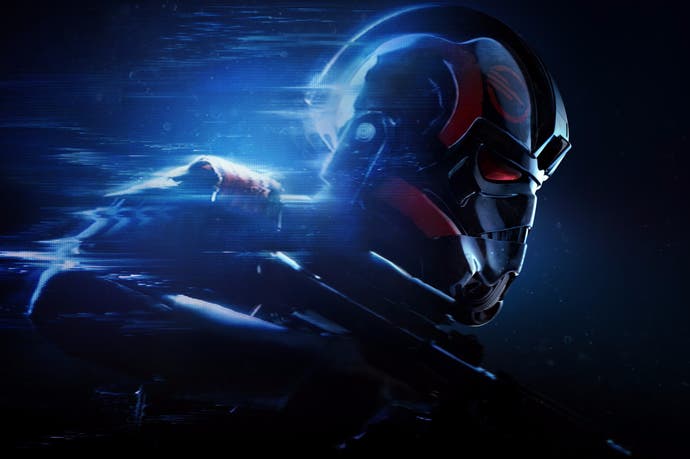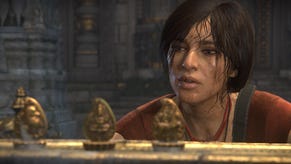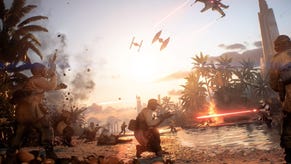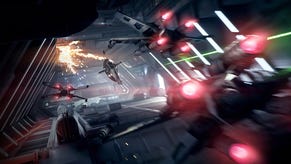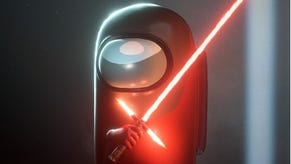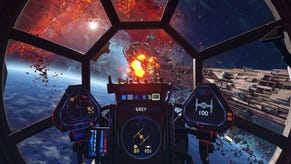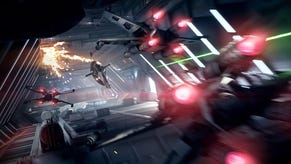Star Wars Battlefront 2: Frostbite stress-tested on Xbox One X
Significant resolution boosts over PS4 Pro, but what about performance?
There was one crucial aspect of the Xbox One X experience we could not cover in our hardware review: to what extent is this actually a 4K games machine and what is the difference in the experience up against Sony's PlayStation 4 Pro? Since then, the X upgrades have rolled in, giving us a better picture of how the machines compare, but what we've been lacking is an apples to apples stress test comparison based on EA's Frostbite technology - one of the most advanced rendering engines on the market. FIFA 18 is impressive but hardly a challenge for the hardware but Star Wars Battlefront is perhaps the game we've been looking for. The results are certainly illuminating.
In many respects, we're looking at a virtual re-run of what we saw recently with Bethesda's Wolfenstein 2. The id Tech 6 engine shares a clutch of technologies also found in Frostbite, designed to maximise the visual return on all systems while targeting 60 frames per second action. First amongst them is dynamic resolution scaling, where both Wolfenstein 2 and Battlefront 2 adjust pixel-counts on the fly in order to sustain performance. PS4 Pro tops out at 2560x1440 on both titles, while Xbox One X pushes further - much further - delivering a maximum of 3840x2160, or full-fat 4K. That's a 2.25x increase in pixel-count, a surprising uplift bearing in mind the respective specs of the two systems.
Of course, dynamic resolution scaling could conceivably close the gap, but the variance in resolution between Pro and X remains wide: based on several measurements we took, the range varies between 1296p and 1440p on the Sony console, rising to an 1800p-2160p window in the same scenes tested on Xbox One X. The numbers are stark then, but another technology shared with id Tech helps to mitigate matters to a certain extent - temporal anti-aliasing. The Frostbite implementation isn't quite as intensive as id's, but it does the job in smoothing off the jaggies and eliminating the most obvious, glaring signs of upscaling.
The net result is, again, similar to Wolfenstein 2. Star Wars Battlefront 2 on Xbox One X sits nicely on a 4K screen, offering up an excellent presentation overall, even if dynamic scaling ensures that you're not seeing a native resolution image all of the time. Meanwhile, PlayStation 4 Pro is significantly blurrier as its framebuffer is upscaled up to the machine's 4K video output. There's a kind of double-whammy for Pro users here as texture filtering quality is intrinsically tied to native resolution, so not only does the Pro look blurrier overall, but ground artwork can lose even more detail, further muddying image quality.
Both 4K consoles feature super-sampling down to 1080p for full HD display owners, and arguably, that's where Pro owners get the most benefit from the higher resolution rendering. Passing off a native 1440p image for 4K display owners can work (image quality on For Honor on PS4 Pro is excellent, despite its 1440p pixel-count) but generally, a 2.25x upscale doesn't quite deliver the visual return you'd want from your shiny new 4K set. To illustrate the divide, we recommend taking a closer look at our image comparison suite further down the page. There's a big gap in terms of overall clarity as we jump from PlayStation 4 Pro to Xbox One X, but certainly in terms of pixel-count, there's something of a case of diminishing returns as we take the next step upwards to the ultra HD output of the PC version.
Beyond the resolution difference, Xbox One X also manages to deliver a small range of peripheral upgrades. These are hardly significant in the greater schemes of things and similar to the seeming boost in texture filtering quality, they may be tied directly to framebuffer resolution, but regardless, shadow definition appears improved, the effectiveness of ambient occlusion moves up a notch, while reflection quality sits at a mid-point between Pro and PC. There's also some evidence of higher quality artwork manifesting as well, similar to the mild upgrade seen in the PlayStation 4 Pro version of Battlefield 1 compared to base hardware.
In terms of all the additional bells and whistles, it's perhaps predictable that the PC version delivers the most complete package. Virtually all aspects of the post-process pipeline receive upgrades, texture quality across the board is better, LODs are pushed out and ground cover can be ramped up too, producing a more dense scene overall. Shadow quality is on another level entirely, to the point where individual leaves cast shadows, so yes, PC users with powerful hardware can rest easy - DICE still loves you and your top-end kit. Battlefront 2 is a beautiful-looking game overall and 1080p60 maxed is achievable on mainstream-level graphics hardware like the GeForce GTX 1060 and Radeon RX 580, with horsepower to spare. In fact, it looks so good that we'd really like to see the consoles offering an alternative rendering mode to leverage the Frostbite engine's full feature set at 1080p, based on just how impressive the PC's showing is here.
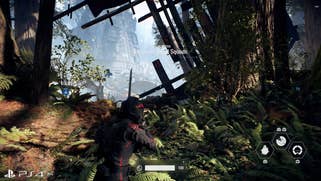
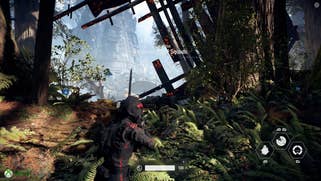
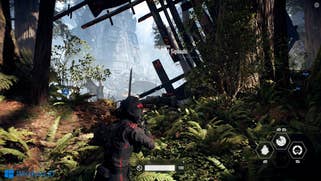



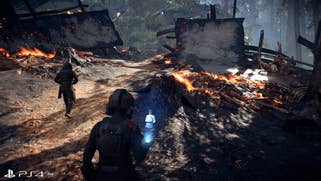
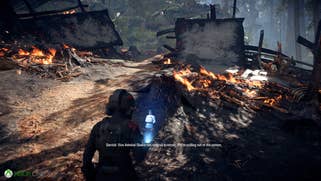
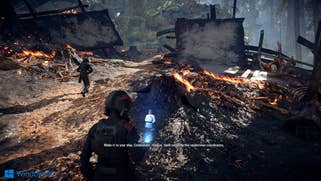

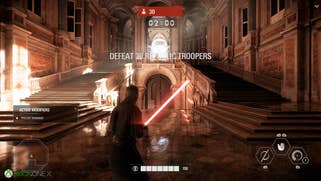
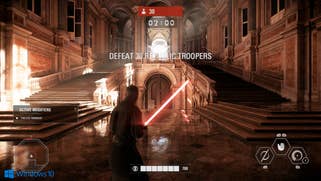
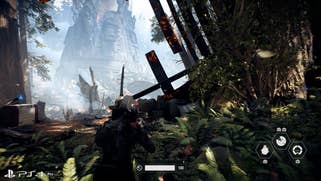
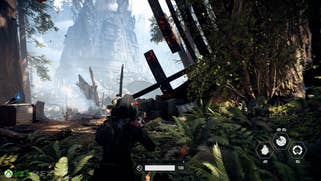
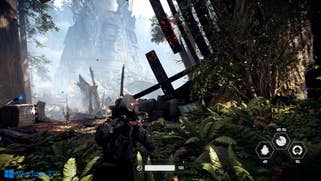
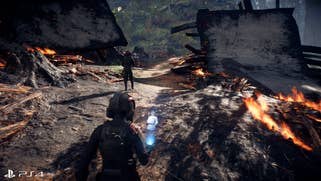
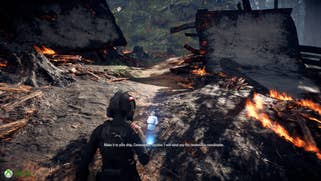

So far, the Frostbite engine showdown is clearly showing Xbox One X firing on all cylinders with some impressive results. However, there is an area where Pro commands a small advantage: performance. We actually played Battlefront 2 on Xbox One X during the EA Access period, before a day one title update arrived last Monday. The game still looked great, but Microsoft advised us that the dynamic scaler would receive tweaks in the patch, so we held off from a full analysis. One thing that did seem clear from the earlier code was that while solid overall, Xbox One X could drop frames - and this persists to a lesser extent into the current revision of the code.
The scope of the issue isn't exactly huge. Watch the video above and you'll see that it's literally a small collection of clustered frame drops resulting in some occasional, mild stutter that can manifest in any of the game modes. However, the point of the dynamic scaler is surely to ensure a consistently locked 60 frames per second throughout and it's this level of flawless performance that PlayStation 4 Pro delivers in like-for-like areas where Xbox One X does not. Bearing in mind that the frequency of the drops isn't exactly prolific in the scenes we tested across both platforms, the chances are that further tweaking to the dynamic resolution technology could iron out the stutter, but as good as it is, Xbox One X isn't quite the conclusive winner in all areas right now.
However, for console users with 4K displays, the new Microsoft console delivers a significantly improved presentation overall compared to its Sony counterpart, and the gulf in clarity and pixel counts is just as surprising as it was with Wolfenstein 2. After all, the Sony and Microsoft consoles are fundamentally based on very similar technologies: Xbox One X has more compute power and more memory bandwidth, but the big leap in pixel counts seen here exceeds what we would have expected based on the specs alone. The bottom line is that Battlefront 2 is great game on all systems that's well worth checking out, but DICE's tuning here on Xbox One X truly delivers the goods for those console users who've chosen to invest in an ultra HD screen.
